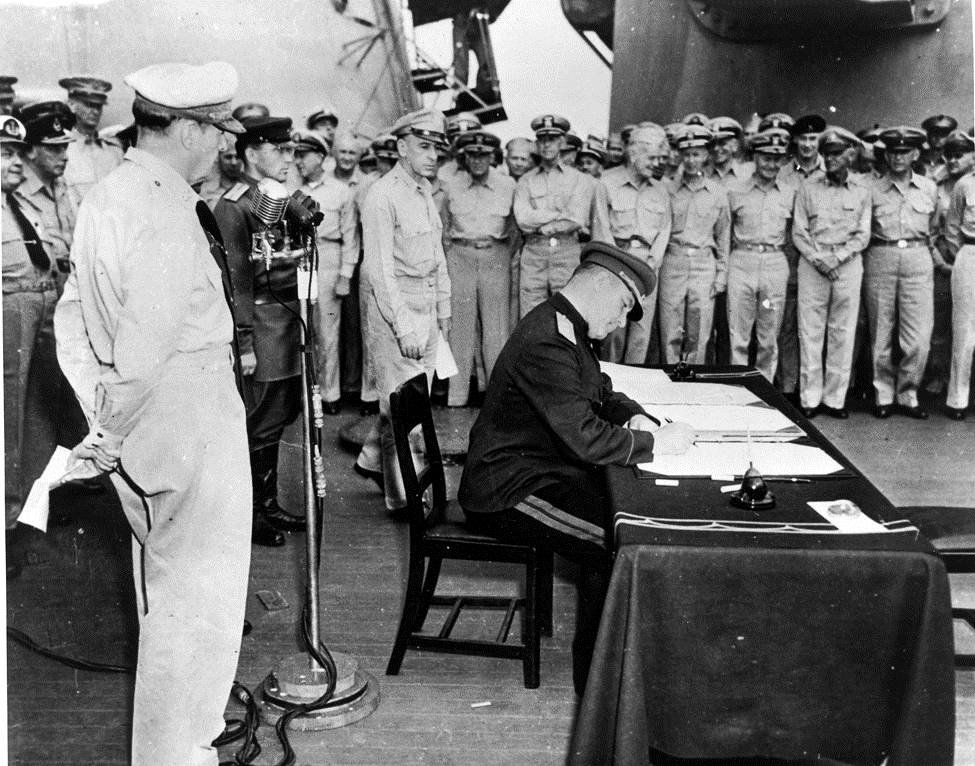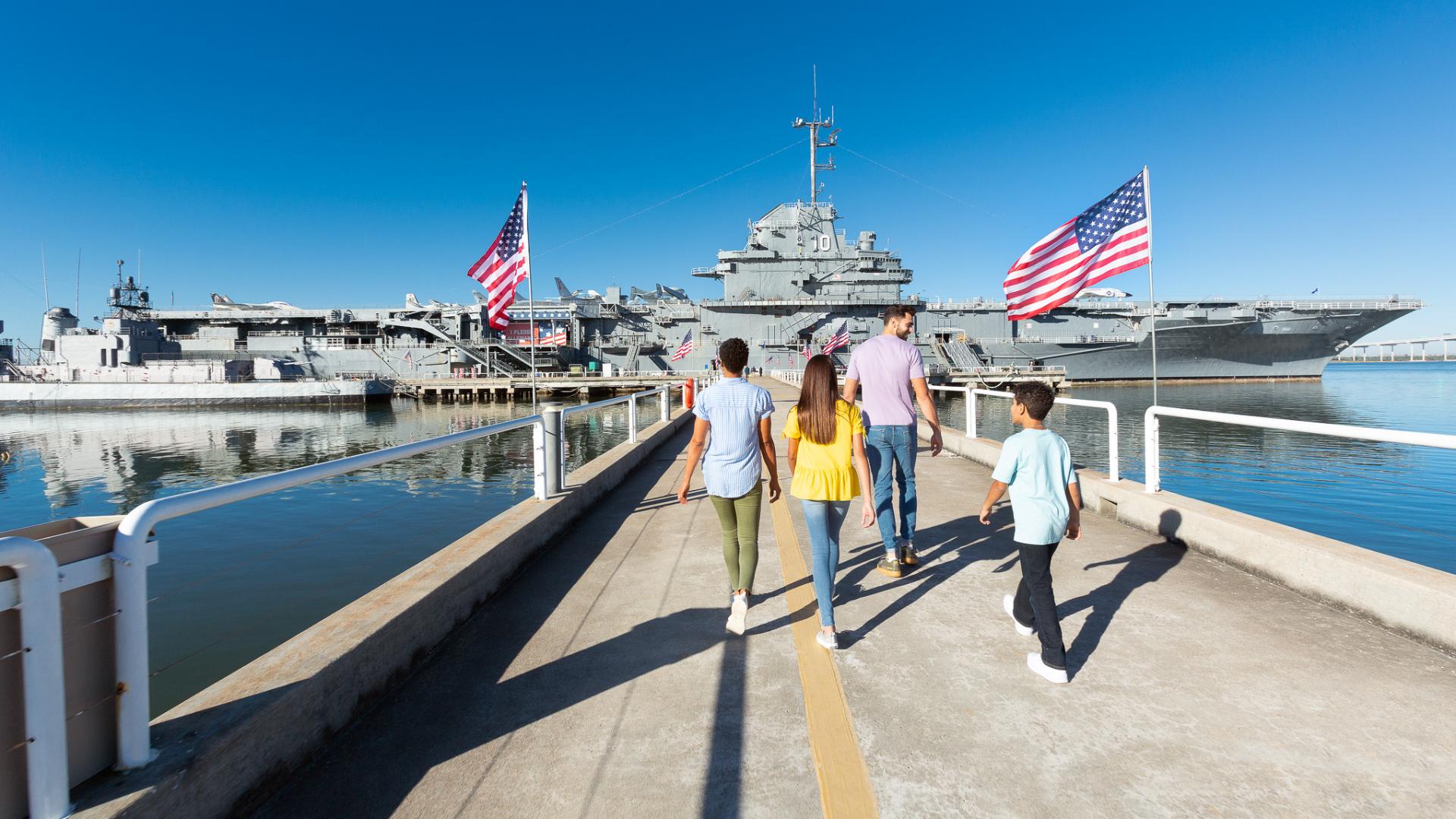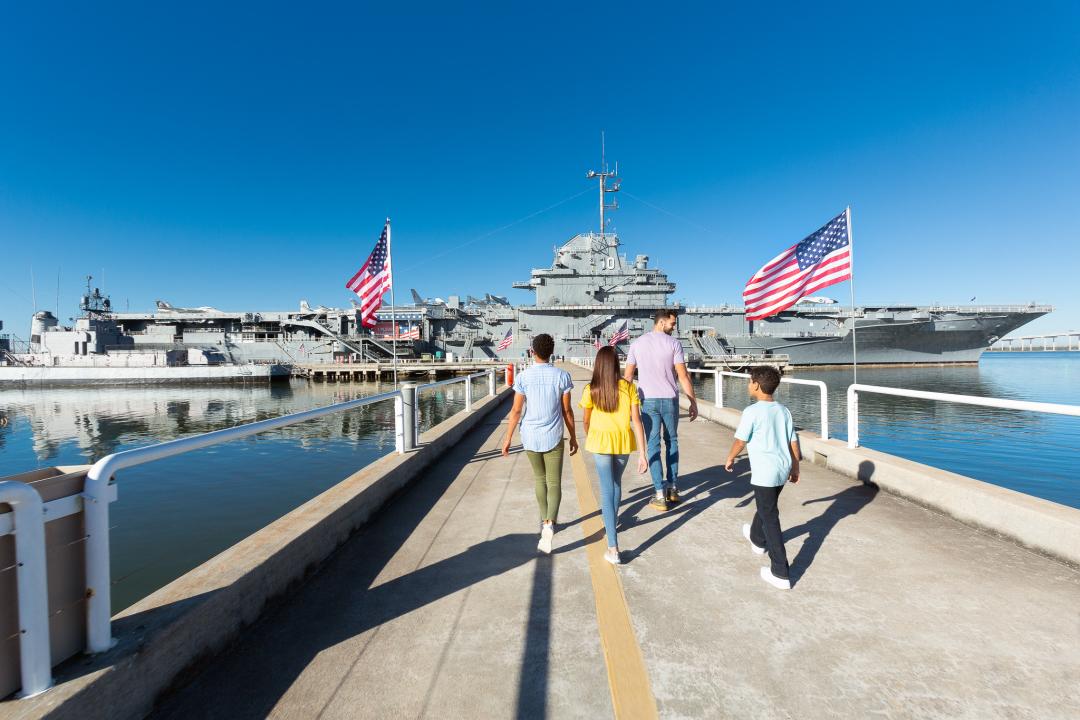This week, the United States commemorated the 75th anniversary of the official end of World War II. On September 2, 1945, historically referred to as V-J Day (Victory over Japan), the peace treaty was signed aboard the USS Missouri. The goal of this blog post is to bring that day to life three-quarters of a century later. Here we go…
It was a Sunday. There were 250 Allied warships at anchor with the Missouri in Tokyo Bay. Twenty-eight days earlier, on August 6, an American B-29 dropped the first atomic bomb on the Japanese city of Hiroshima, killing more than 70,000 citizens. Three days later, August 9, the United States dropped a second atomic bomb on Nagasaki, killing an additional 40,000 people.
The military was prepared to drop a third bomb, which would be ready within a week. As the news started to trickle in of the devastation of the first two bombs, President Truman stepped in and issued an order that future bombings would require his direct approval. Nevertheless, the military prepared to drop the third bomb.
There were ample reasons to be concerned. Japan’s initial acceptance of peace was relayed to the United States on August 10. The United States accepted, with conditions. Before a formal surrender could be announced in the early hours of August 15, a military coup was attempted. The rebels seized control of the imperial palace and burned Prime Minister Suzuki’s residence. Shortly after dawn, the coup was crushed. At noon that day, Emperor Hirohito went on national radio and announced the Japanese surrender.

With the fear that members of Japan’s military could attempt a second coup, Officers on Missouri’s deck that day in September knew planes were in the air over Japan, ready to strike if a formal surrender did not occur as planned.
Shortly after 9 a.m. Tokyo time, Japanese Foreign Minister Mamoru Shigemitsu signed on behalf of the Japanese government. He was followed by General Yoshijiro Umezu, who signed on behalf of the Japanese armed forces. There are stories by those that attended that describe Umezu’s aides as weeping as he made his signature.
Supreme Commander MacArthur signed next, declaring, “It is my earnest hope and indeed the hope of all mankind that from this solemn occasion a better world shall emerge out of the blood and carnage of the past.” Ten more signatures were made, by the United States, China, Britain, the USSR, Australia, Canada, France, the Netherlands, and New Zealand, respectively. Admiral Chester W. Nimitz signed for the United States.
It was done. The War to end all wars had finally come to full closure.
Lore has it that General Douglas MacArthur dropped a pen cover during the surrender signing ceremony. The top rolled around the deck. According to his aids, knowing the General, there was no way he was going to bend down and pick it up. They knew that simple action could have been interpreted as MacArthur appearing to bow to the enemy.

